Hyundai i30 Tourer Review 2025: Price, specs & boot space
Quick overview
Pros
- Generous boot space
- Strong value
- Plenty of kit
Cons
- Drive misses fun of some rivals
- Passenger space could be better
- Unsettled ride
Overall verdict on the Hyundai i30 Tourer
“Hyundai made a thorough job of turning the i30 hatch into the Tourer estate. The rear end is extended to create a large boot area, so this is an extremely practical family wagon. It’s a pity not so much attention went into the way the Tourer drives, though.”
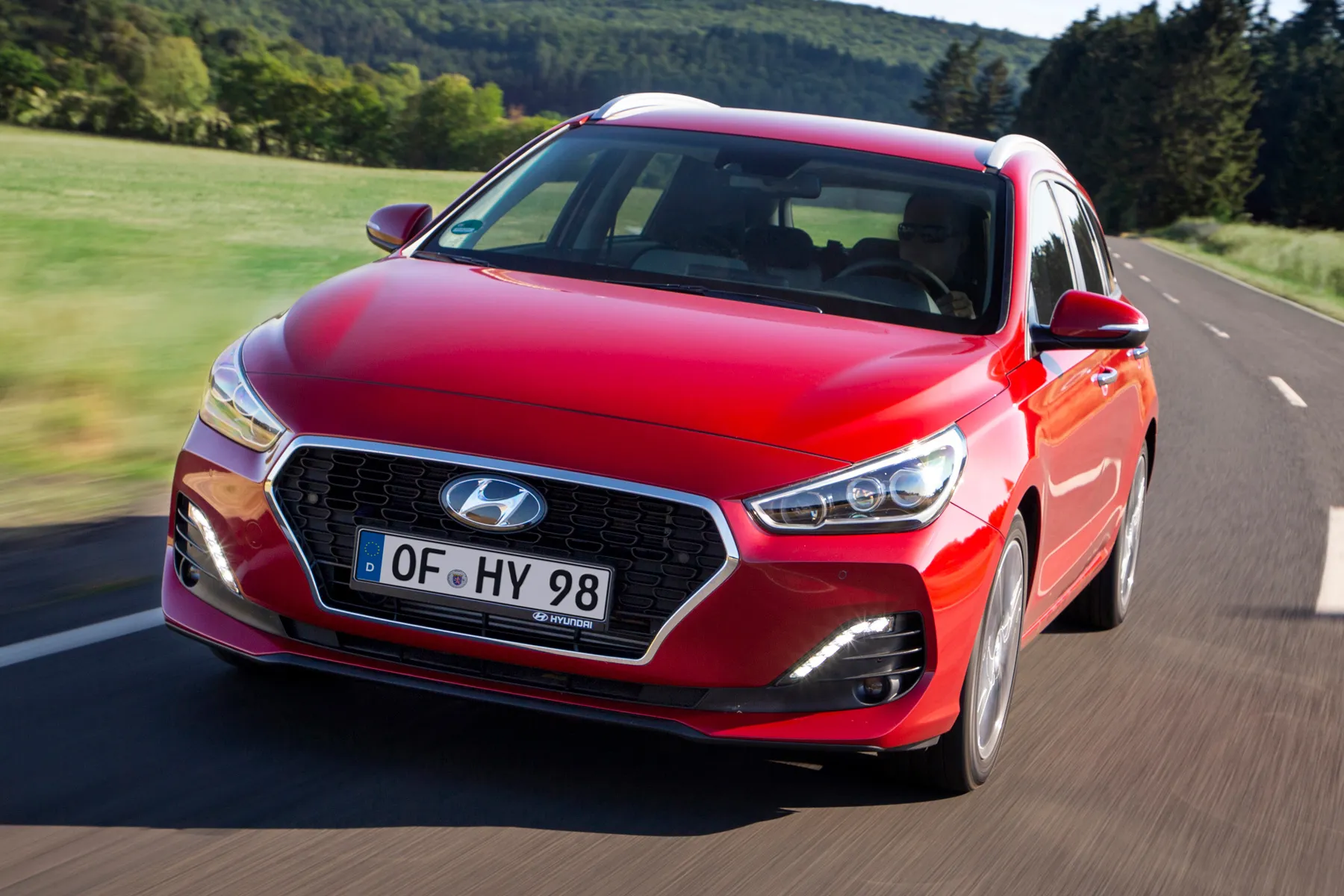
The Hyundai i30 has improved with each generation and the one launched in 2017 took every facet of the car to a new level. This includes the Tourer estate, which joined it segment as one of the most spacious, practical cars you could hope for.
Even when many buyers have been turning to SUVs, the i30 Tourer has stood firm and generated sales thanks to its unerring focus on doing all the load carrying, versatility stuff as well as or better than any SUV of a similar price. When you factor in Hyundai’s five-year, unlimited mileage warranty, then just about the only SUVs that can compete are from Hyundai’s own stable.
It’s not all rosy in the i30 Tourer garden, however. While Hyundai put a lot of effort into making the Tourer a big cargo holder, it seems it spent a lot less time on the driving side of the equation. That’s a real shame when we know this platform is capable of delivering an entertaining drive in the i30 Fastback model.
What we get instead is an estate that does all of the basics well enough with a ride and handling that are adequate by class standards but not as good as Ford Focus estate or Skoda Octavia Wagon. Nor is the performance from the engines much to write home about.
You have the same choice of 1.0- and 1.4-litre turbo petrol motors used in the Hyundai i30 hatch and Fastback up to 2022, plus a 1.6-litre turbodiesel with 110- or 136PS depending on the state of tune. All do a decent job in the i30 Tourer, but you wouldn’t call them exciting and the car went off sale before Hyundai had a chance to offer its fine 1.5T GDi petrol in this model.
On a positive note, the engines are frugal and running costs are low with the Hyundai. It also comes with plenty of kit in all trim levels, and there are several to choose from but not the hot hatch N Performance version.
The cabin is handsome, well put together and there’s also a generous level of safety kit in all versions including lane keep assist, automatic emergency braking, and blind spot detection.
That all goes to make the Hyundai i30 Tourer a fantastic family estate car, if not the most entertaining to drive.
Is the Hyundai i30 Tourer right for you?
In a world where the SUV has seemingly taken over, the estate car still has a lot to recommend it. For starters, the Hyundai i30 Tourer has a large load area that is easily accessed through a big opening. You can drop the rear seats for even more space, and it is all built to a high standard so it won’t crumble at first contact with family life.
A Ford Focus or Skoda Octavia are better to drive, but even they struggle to match the Hyundai’s overall running costs and buying package thanks to the amount of safety and luxury kit that is standard.
What’s the best Hyundai i30 Tourer model/engine to choose?
It might not be fashionable to say it, but we’d choose the Hyundai i30 Tourer with the diesel engine if you need a car for anything more than just town driving. The diesel is Euro 6 compliant, so you don’t have to worry about low emissions zones in this car, and the more powerful diesel delivers good all-round flexibility, quiet cruising, and 65.7mpg claimed combined economy when matched to the six-speed manual gearbox.
If you’d rather have a petrol motor, look to the 140PS 1.4-litre version. It’s not quite as frugal as the 1.0-litre motor, but you’ll not worry about this when it still returns an average of 51.4mpg and is much more at home on the motorway. There is also the mild hybrid 1.0-litre engine from 2020 with 120PS.
As for trims, we’d look to the Premium for cars sold before the i30 Tourer was updated in 2020, or the SE Connect for post-facelift models.
What other cars are similar to the Hyundai i30 Tourer?
There’s a very strong selection of rivals to the Hyundai i30 Tourer, starting with the Skoda Octavia Estate that has plenty of space, comfort and kit at keen prices.
The Ford Focus and Volkswagen Golf also serve up excellent estate models, while the Kia Ceed Sportswagon is closely related to the i30 and trades some equipment for an even better warranty. Another to consider is the Vauxhall Astra Sports Tourer for its many talents.
In this sector, you’d also do well to look at the Toyota Corolla Touring Sports and its close relative, the Suzuki Swace, which both offer hybrid power and excellent comfort.
Comfort and design: Hyundai i30 Tourer interior
"The front cabin of the Hyundai i30 Tourer is identical to the hatch model, and both were further improved with an update in 2020. Even before this, the i30 stood out for its considered, practical design that put people first rather than a designer’s whims."
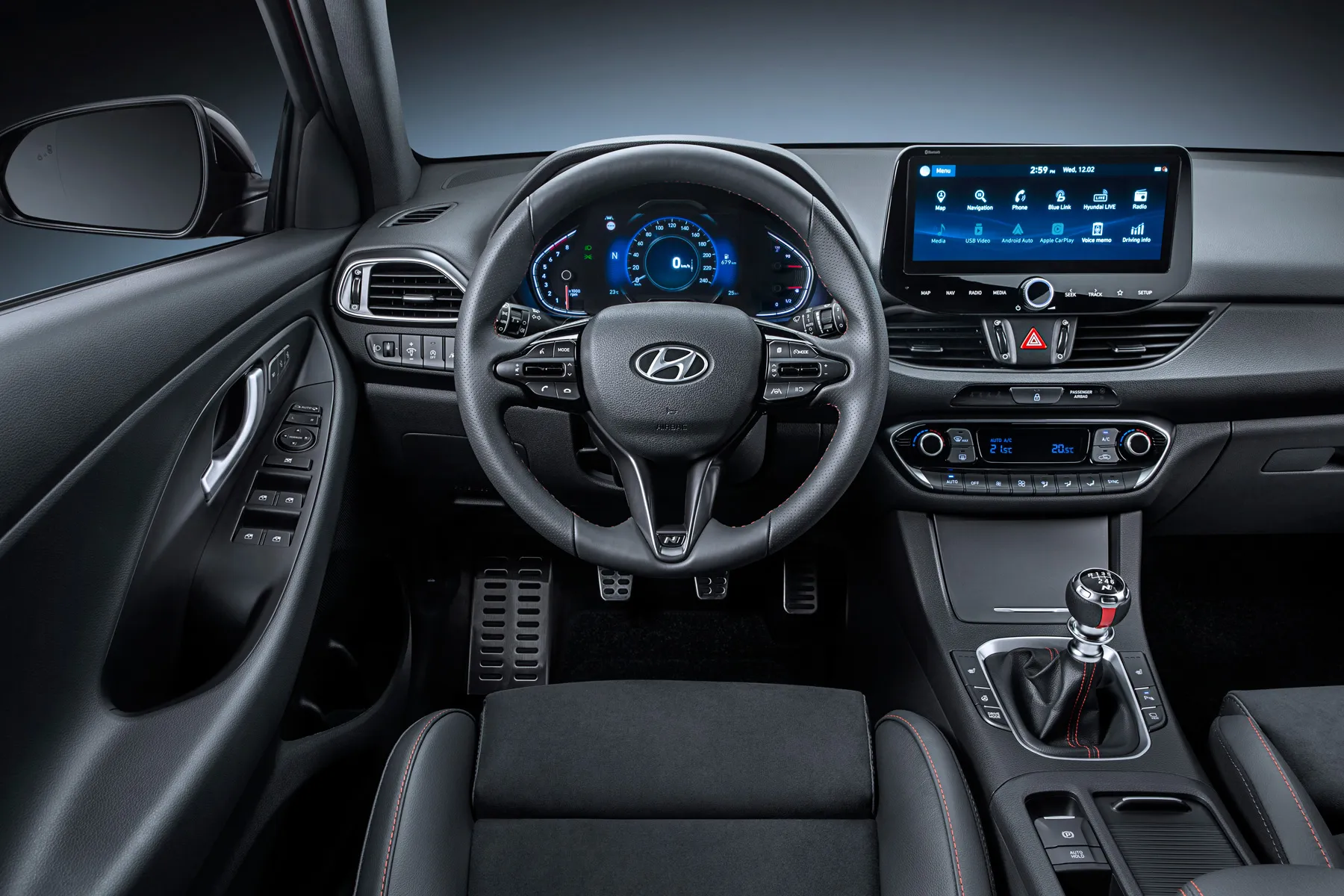
As a result of this, the i30 Tourer offers an excellent driving position that is easy to hone to your liking with a reach and rake adjustable steering column. The driver’s seat also moves for height adjustment, and all-round vision is better in the Tourer than in the i30 hatch or Fastback.
A clearly laid out dash is simple to read and find your way around, helped by separate, physical buttons for the heating and ventilation that are a lesson to others (yes, Volkswagen, we’re looking at you here).
All but the base S trim comes with an infotainment screen mounted high in the centre of the dash that has clear graphics and is placed within easy reach of the driver.
Elsewhere, there’s plenty of storage dotted around the front cabin, while in the back there’s decent room for kids. It’s not quite as generous with space for adults, but you’re not likely to hear many complaints.
Quality and finish
The Hyundai i30 Tourer feels very well made, with sturdy plastics and a neat layout. It's not particularly 'premium' in look but it's designed to be easy to use - and it does that very well. We just wish there was some more colourful trim - it really is a sea of black plastic with the odd little splash of silver.
Post-facelift models are generally a little bit nicer, with more chrome trim and a larger touchscreen, plus small digital dials that look a bit more modern. Low-spec pre-facelift models are particularly drab, and worth avoiding unless you're on a budget.
On the plus side, none of the finishes feel particularly cheap or brittle, and it's clear Hyundai has done a good job of shaking its budget roots.
Infotainment: Touchscreen, USB, nav and stereo in the Hyundai i30 Tourer
Before the 2020 facelift, the entry-level Hyundai i30 Tourer S didn't have an infotainment touchscreen, instead getting a rather naff-looking radio system with a tiny, non-colour display, hence why Hyundai dropped it for the facelift.
All other pre-facelift models got a rather small 5.0-inch screen on SE Spec, and 8.0-inch version on SE Nav models or above. That bigger screen also got Apple CarPlay and Android Auto support, plus sat-nav, so if you're buying used it's definitely the one to go for.
Post-2020, even the entry-level SE Connect trim gets an 8.0-inch touchscreen with Apple CarPlay and Android Auto as standard.
N-Line and Premium models get a clearer and crisper 10.25-inch display, which brings sat-nav and features such as wireless phone charging. The feature-packed display brings the i30 up-to-date with newer rivals, while Hyundai has retained the separate climate control stack which is simple to use on the move.
Prior to the facelift, there were no digital instruments. After that, it was as an option on base trims and standard on N-Line and Premium models. Frankly, though, it's not the best system - the seven-inch display is on the small size, and it's nowhere near as customisable as VW Group's take on this technology.
Space and practicality: Hyundai i30 Tourer boot space
A large boot is the whole point of an estate car and to achieve this Hyundai stretched the i30 by 245mm to make the Tourer. This generates 602-litres of cargo capacity in normal use, which puts the Tourer alongside the Golf Estate for space and shames even a Volvo V90.
When you tip the 60-40 drop and tumble rear seats, you can free up as much as 1650-litres of load carrying room, which is not the largest in this sector but still very useful.
Just as importantly, access to the boot of the Hyundai i30 Tourer is excellent through the large tailgate that swings up high, so there’s no danger of banging your forehead on it. It also works well to keep the rain off when dealing with the kids’ muddy wellies or just stashing the shopping away.
There’s no step from the low load sill to the boot floor, so shoving in heavier items is simple. When the rear seats are folded down, there is a small lip in the cargo floor, but it’s not insurmountable or anywhere near as pronounced as in the i30 Fastback.
Handling and ride quality: What is the Hyundai i30 Tourer like to drive?
"If you are after a mid-size estate that is still going to curl up the corners of your mouth when you come upon a sinuous back road with no traffic, the Hyundai i30 Tourer is probably not the car for you. On the other hand, if you want a car to cover plenty of miles in peace and quiet so you can hold a conversation easily even at motorway speeds, step this way."
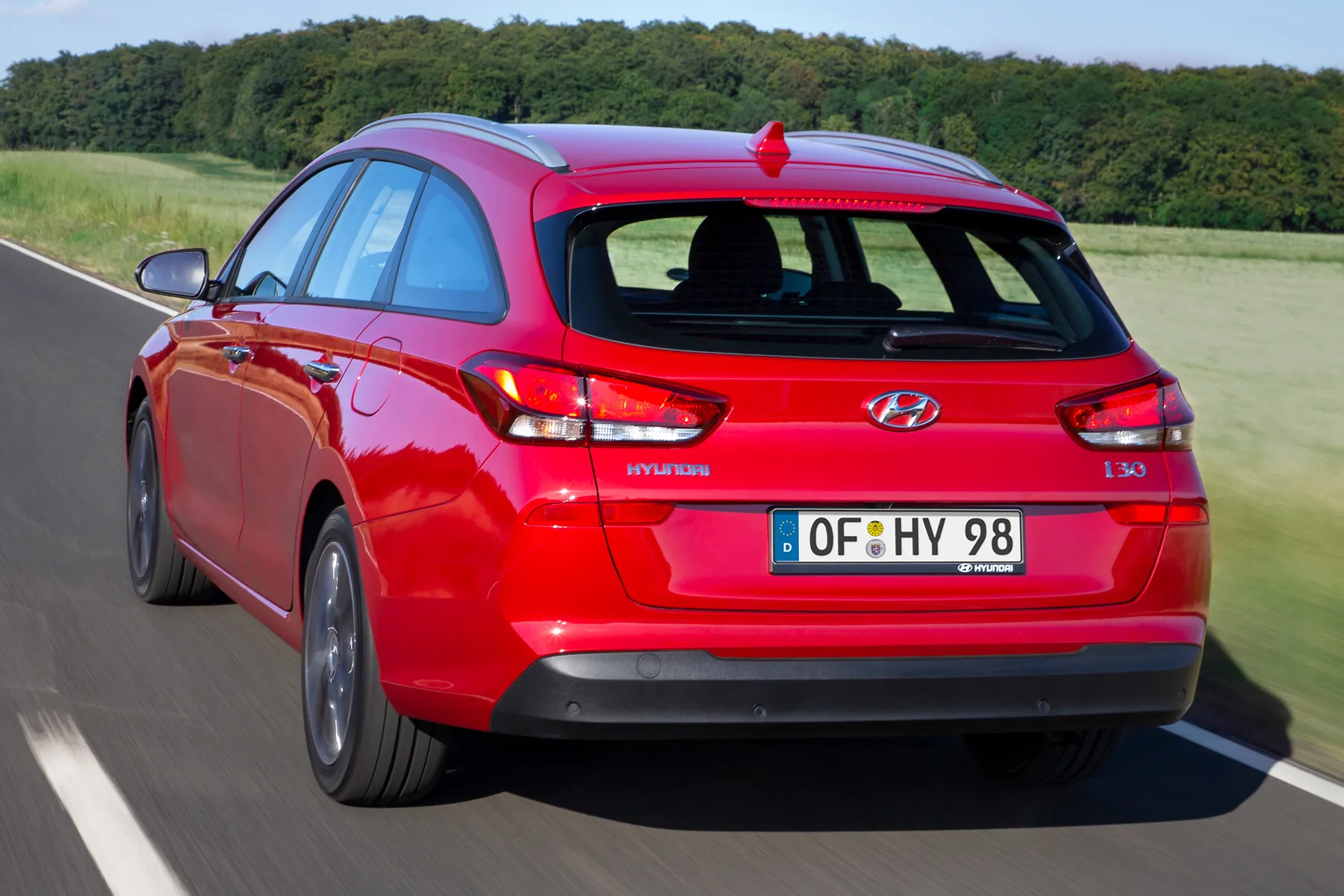
Such a compliant, well balanced ride can be found in the Ford Focus or Skoda Octavia, and they also dish up a good dollop of handling panache too. This is where they have an advantage over the i30 Tourer because as soon as you try to assert the Hyundai through corners it starts to wallow. It’s never unsettling, but it soon has you defaulting to a leisurely cruise as there’s not a great deal of feedback through the steering.
However, the i30 Touring does have decent grip in all conditions, so it is safe and there are also plenty of driver aids to warn of wandering out of a lane or getting too close to the car in front
What engines and gearboxes are available in the Hyundai i30 Tourer?
Hyundai sold the i30 Tourer with two turbo petrol engines and pair of turbodiesels. Starting with the petrols, the first up is the 120PS 1.0-litre motor, which is a three-cylinder unit that delivers a much better drive than you might expect of such a small capacity engine in an estate car.
Where the 1.0-litre feels a little unsporting in the i30 Fastback, it’s right at home in the Tourer where its flexible spread of power makes it easy to potter in town or waft along the motorway. You can hear its trademark three-cylinder thrum when it’s revved harder, but it’s happy sound rather than one that interrupts the cabin harmony.
If you cover plenty of longer journeys, the 140PS 1.4-litre turbo petrol engine is a better bet and it can be had with six-speed manual or seven-speed automatic transmissions. Either work very well with this engine that gives a good account of itself in any environment.
Turning our attention to the diesel engines, they are both 1.6-litre motors that are much the same bar the amount of power they make. The 110PS version is the less potent of the two and comes with a six-speed manual gearbox that is light and easy to work. Performance from this engine is decent but not scintillating, taking 11.3 seconds to get from nought to 62mph compared to 11.4 seconds for the 1.0-litre petrol and 9.2 seconds for the 1.4 petrol.
In most cases, the 110PS diesel will do the job very well, but for hauling a bootful of kit, the 136PS version will make lighter work of the job. It comes with a dual clutch automatic gearbox as standard, which does take the edge of acceleration – 0-62mph takes 10.9 seconds – but it also offers an ease of driving that’s well suited to the car i30 Tourer’s nature.
Refinement and noise levels
Hyundai has made a superb job of isolating the i30’s interior from outside sources of noise, such as wind, tyre rumble, and the car’s own engine.
Even as you accelerate hard to join a motorway, the i30’s engines are refined, and there is next to none of the tyre whoosh you get in some rivals as you pass from one road surface to another or over the plethora of potholes that masquerade as road in many town centres.
The smaller petrol engine can be heard when you ask it to sing for its supper as you pull on to busy roads, but it’s an upbeat tune thanks to its three-cylinder purr. It also settles back to a distant note once you’re cruising along.
Safety equipment: How safe is the Hyundai i30 Tourer?
The whole Hyundai i30 range, including the Hyundai i30 Tourer, was awarded a five-star safety rating by the experts at Euro NCAP. It scored more than 80 percent for protecting adult and child occupants in a crash. The assessors were impressed with other aspects of the car’s safety as well.
Plenty of driver assistance features are fitted to the i30 Tourer. They include cruise control with a speed limiter, automatic emergency braking, lane-departure warning, lane-keeping assist, a driver attention monitor, and six airbags.
MPG and fuel costs: What does a Hyundai i30 Tourer cost to run?
"Whichever Hyundai i30 Tourer you decide is the one for you, none of them will demand too much of your salary to fuel it. By far and away the most frugal according to official claimed economy figures is the 110PS 1.6-litre turbodiesel motor, which returns an impressive 74.3mpg, which was also tested under the new, stricter regime that is more accurate."
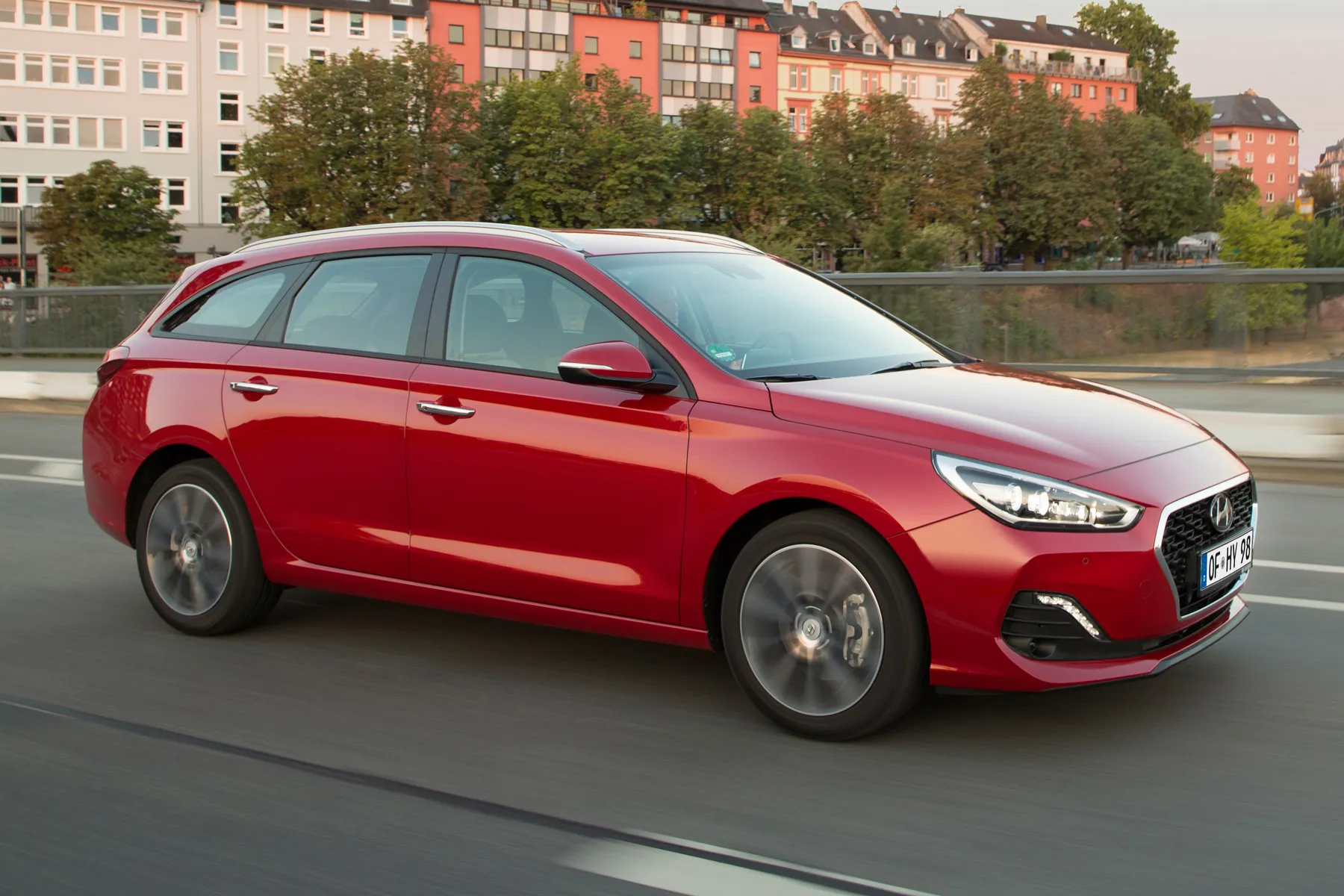
Take the more powerful 136PS turbodiesel and it’s capable of a combined consumption of 65.7mpg, so it’s up there among the most efficient in its class.
Looking at the petrol engines, the 1.0-litre offers 54.3mpg, which is not far behind the hatch model’s, while the 1.4 manages a still very decent 51.4mpg average. In our experience of driving this pair in the real world, high 40s economy is very much on the cards, while the diesels routinely offer mid-60s consumption.
How reliable is the Hyundai i30 Tourer?
Hyundai is a constant feature at the top end of reliability surveys and it placed 7th in the latest 2022 HonestJohn Satisfaction Survey. This should give you a good deal of confidence in its durability.
The i30 Tourer’s long term reliability is also backed by Hyundai’s five-year, unlimited mileage warranty that will pass on to any user buyer with the car up to that five-year mark.
Insurance groups and costs
With no hot hatch N Performance model in the line-up, the Hyundai i30’s insurance rating are based on Groups 8 to 15. That’s slightly lower than for an equivalent Ford Focus or Volkswagen Golf, so premiums for the Hyundai should be a little cheaper to further its cause as a car with great value and low ownership costs.
VED car tax: What is the annual road tax on a Hyundai i30 Tourer?
As a used buy, all of the Hyundai i30 Tourer range will pay the annual road tax, or Vehicle Excise Duty, bill of £180 per year.
For company car drivers, the i30 Tourer sits in Benefit in Kind brackets of 21- to 24% depending on the model and engine chosen, so none are too onerous on your monthly costs.
How much should you be paying for a used Hyundai i30 Tourer?
"A five-year old Hyundai i30 Tourer with 50,000 miles on the clock will cost from around £10,000. For that sum, you will be looking at a Premium trim level car with either the 1.0-litre petrol engine or the lower power diesel motor."
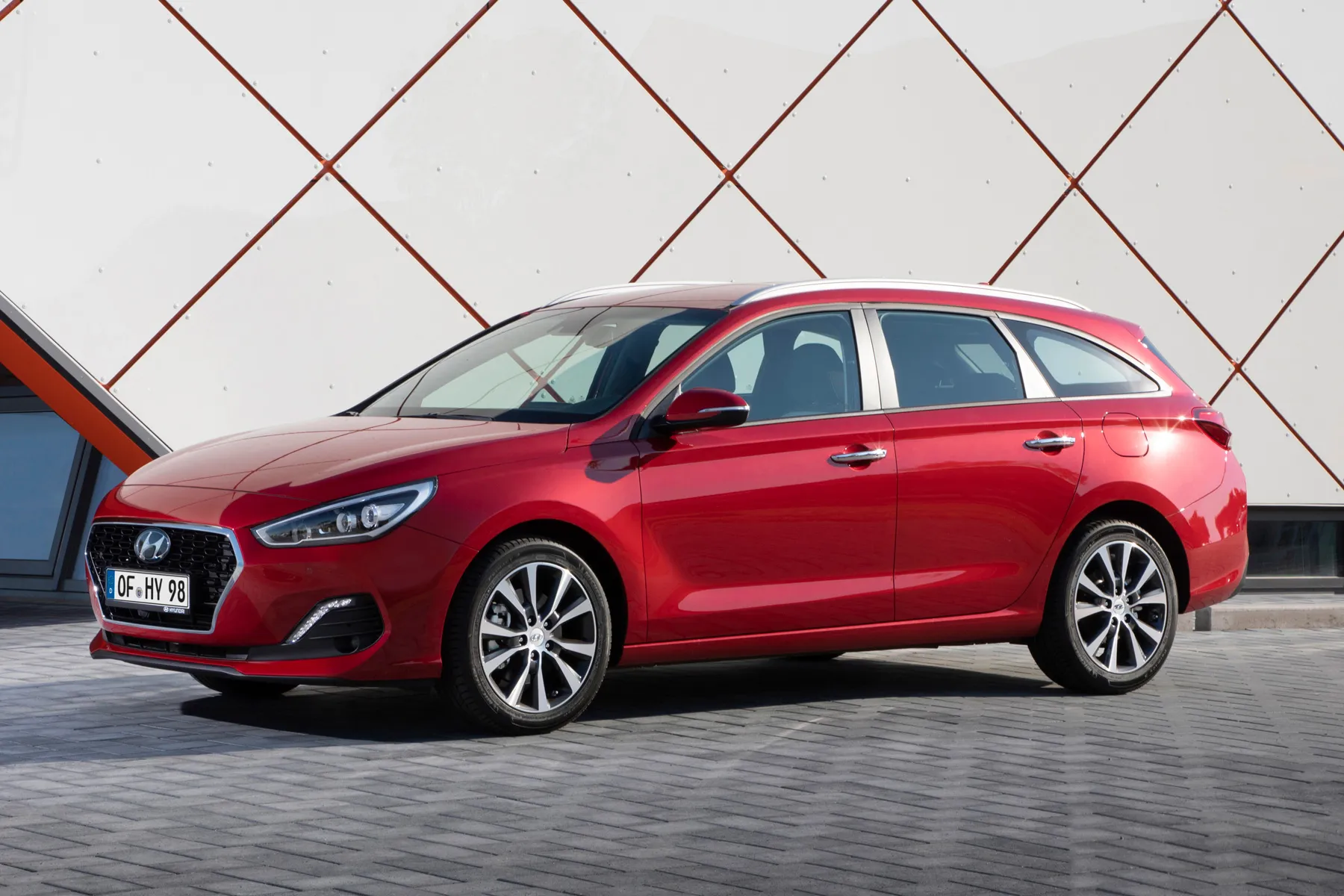
Look for a two-year old i30 Tourer in SE Connect specification and with 20,000 miles under its wheels, and you’ll need to budget from around £16,000. That will get you a car that is still within its Hyundai warranty period for added peace of mind.
Trim levels and standard equipment
When Hyundai launched the i30 Tourer, it started off with S model that came with air conditioning, Bluetooth connection, electric windows all round. It also has safety kit such as lane keep assist and autonomous emergency braking. However, this trim did without an infotainment screen and made do with a small monochrome display for the radio.
Move to the SE model and you’ll find it gained 16-inch alloy wheels, a leather steering wheel, cruise control, and 5.0-inch infotainment touchscreen. To gain the larger 7.0-inch touchscreen, you need to look to the SE Nav model which also comes with Apple CarPlay, Android Auto, Bluetooth, and DAB digital radio.
With the Premium trim, you get all of this, as well as 17-inch alloy wheels, keyless entry, heated seats, and climate control.
After the 2020 facelift of the i30 range, the Tourer came in SE Connect, N Line, and Premium trims. The SE Connect comes with a leather steering wheel, parking sensors, reversing camera, and cruise control. There are also 16-inch alloys, automatic headlights, electric folding door mirrors, and an 8.0-inch infotainment screen. Move to the N Line and it has a sporty body kit, rear privacy glass, plus 18-inch alloy wheels, and the 10.25-inch infotainment touchscreen.
With the Premium, you get the same infotainment display, the 7.0-inch supervision main dash display, automatic wipers, heated front seats and steering wheel, electric front seat adjustment for the driver, and climate control. It also has keyless entry, wireless phone charging pad, and leather upholstery.
Ask the heycar experts: common questions
How can I spot a facelifted Hyundai i30 Tourer?
Is there an option to make the Hyundai i30 Tourer more exciting?
What happened to the 1.5T GDi engine for the Hyundai i30 Tourer?
Get our latest advice, news and offers
Keep me updated by email with the latest advice, news and offers from heycar.
By submitting you agree to our privacy policy



